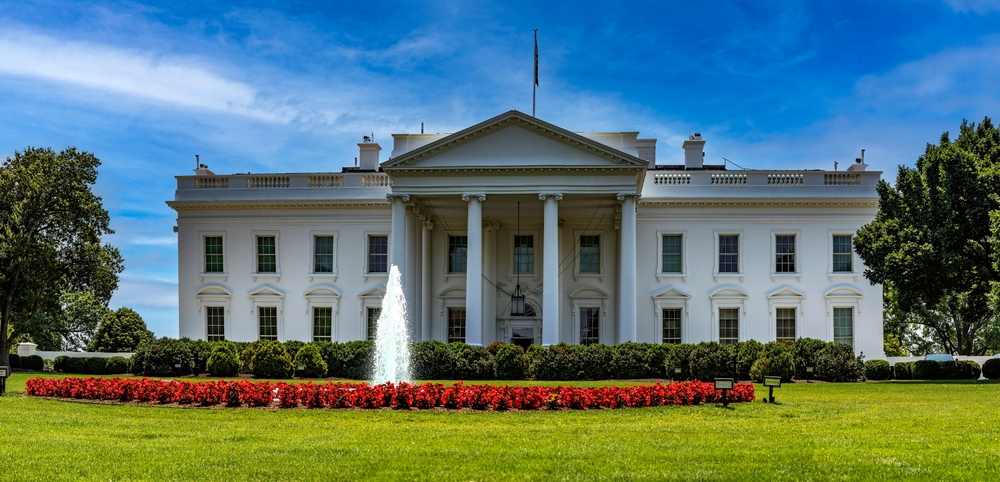This story was originally published by The San Diego Voice & Viewpoint and NNPA Newswire. Sign up for The San Diego Voice & Viewpoint newsletters.
The White House announced a series of new policies on Aug. 2 aimed at preventing family separation and creating opportunities for families and youth during a convening that brought together policymakers from federal, state, local, and tribal governments, along with leaders from philanthropy, child welfare, and family support organizations, and individuals with personal experiences in the child welfare system.
The Biden-Harris administration demanded that children should not be separated from their families solely due to financial hardship.
The event focused on encouraging innovation, building partnerships, and sharing best practices.
One central area of focus is the distinction between poverty and neglect. The Biden-Harris administration demanded that children should not be separated from their families solely due to financial hardship. States like Kentucky, Indiana, South Carolina, Wisconsin, Pennsylvania, Washington, and Kansas have already clarified that poverty should not be a reason for child removal.
The Department of Health and Human Services (HHS) announced new policy guidance encouraging states to update their definitions of maltreatment under the Child Abuse Prevention and Treatment Act to exclude situations where families are unable to provide adequate housing, childcare, and other material needs due to financial constraints.
Mandated reporter training and prevention measures
Additionally, HHS officials asserted that the agency remains committed to developing training guidance for mandated reporters to help them connect economically fragile families to support services and recognize these new definitions of neglect.
Further, the administration plans to expand how states and tribes can use federal funding for prevention activities, including offering more flexibility to tribal governments to use accepted prevention services in collaboration with state child welfare agencies. Officials said the policies also permit federal administrative funding to help families engage with prevention programs through services such as case management, peer navigation, and transportation. In a fact sheet, the White House said future guidance will detail how to integrate the Temporary Assistance for Needy Families program to prevent involvement in the child welfare system.
Kinship care is prioritized
Officials said the administration also prioritizes the needs of children and youth. Recognizing that children with relatives and other kin have better outcomes, the new policies incentivize jurisdictions to ensure children can live with kin when they cannot be with their parents. This includes allowing child welfare agencies to use federal funds for background checks to expedite the licensing process for kin caregivers, creating a new website to spotlight states and tribes that have adopted kinship licensing rules, and publishing a resource guide for grandparents and kin caregivers.
[Related: Healing the children of Horse Nations]
Additionally, the administration promised to conduct listening sessions to identify federal flexibilities for states and tribes to adopt kinship-first approaches.
Research support
HHS announced several projects to develop actionable research on the intersection between prevention, family support, and child well-being outcomes. The projects plan to highlight innovative prevention approaches that rely on service integration and agency collaboration to prevent homelessness among youth aging out of foster care and to build family resilience.
They will also enable researchers to study linked Medicaid and child welfare data to understand better the health needs of children and parents involved in the child welfare system and examine the characteristics and experiences of families who relinquished or voluntarily placed their children in child welfare custody.
Biden-Harris child welfare track record
Officials insisted that the Biden-Harris administration has a strong track record on child welfare. Since taking office, they have accelerated the Title IV-E Prevention Program uptake, approved 38 prevention plans, and expanded evidence-based services. They have also respected tribal sovereignty by increasing the scope of Public Law 102-477 plans and celebrated the Supreme Court’s decision in Haaland v. Brackeen, which upheld the Indian Child Welfare Act.
The President and Vice President believe every child should have the opportunity to reach their full potential and grow up in a safe and loving home with their families.
Additionally, the administration has doubled funding for home visiting programs, increased support for kinship care, and provided significant housing relief for families. They have also taken steps to protect parents and children with disabilities from discrimination, cut child poverty nearly in half by expanding the Child Tax Credit, and secured almost a 50% increase in childcare funding.
[Related: Parents tote toddlers to D.C. to press for expanded child tax credit, child care funds]
“The President and Vice President believe every child should have the opportunity to reach their full potential and grow up in a safe and loving home with their families,” administration officials stated. “Over four million families are referred to child protective services each year, and around 200,000 children enter foster care. Child welfare systems are prepared to step in when a child’s safety is at risk, but they are frequently tasked with intervening when families are simply impoverished and could be best helped in the long run by meeting their economic and service needs.”
![]()
 This historic package of regulations to ensure children in the child welfare system thrive was released in honor of National Kinship Care Month that recognizes the importance of grandparents and relatives caring for children when their parents are unable. Across the nation, approximately 2.7 million grandparents and 1.4 million other relatives are providing kinship care for children.
This historic package of regulations to ensure children in the child welfare system thrive was released in honor of National Kinship Care Month that recognizes the importance of grandparents and relatives caring for children when their parents are unable. Across the nation, approximately 2.7 million grandparents and 1.4 million other relatives are providing kinship care for children.
***
Stacy M. Brown is a New York-based a senior national correspondent for the NNPA/Black Press of America and senior writer for The Washington Informer. His work had been published in the Washington Informer, Baltimore Times, Philadelphia Tribune, Pocono Record, the New York Post, and Black Press USA.
The San Diego Voice & Viewpoint has been reporting on news from an African-American perspective and African-American communities of San Diego County for over six decades. The print publication can be found in all 89 zip codes of San Diego and has readership of over 20,000.






























